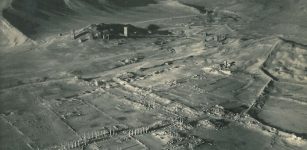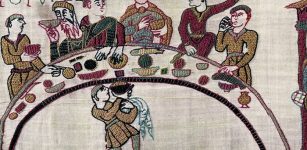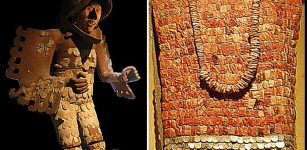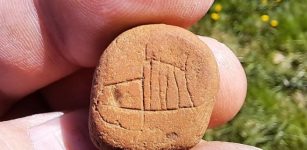New York Was Once Called New Amsterdam – History Behind The Change Of Name
AncientPages.com - Did you know that New York was once called New Amsterdam?
Today, it’s difficult to imagine that New York could ever have had another name, but it was not so long ago that the city was renamed. New York was once called New Amsterdam and it was the capital of New Netherland.
New York’s name history can be traced to a time during the 17th century when Britain, France and Netherlands all struggled to expand their territories and establish more colonies.
Though Britain and France were rivals, they could still co-operate and form an alliance against their common enemy - the Netherlands, a small country that for 80 years fought for independence and now started to conquer the world.
Image credit: Museum of the City of New York
The Netherlands became more and more powerful. One of the goals was to set up colonies in North America.
The first recorded exploration by the Dutch of the area around what is now called New York Bay was in 1609 with the voyage of the ship Halve Maen.
In 1626, Dutch governor Peter Minuit formally purchased Manhattan from the local Indian tribe. According to a legend, the Manhattans–Indians of Algonquian linguistic stock agreed to give up the island in exchange for trinkets valued at only $24.
See also:
The Name Of America Used For The First Time On World Map – On Apr 25, 1507
More Fascinating Ancient History Facts
At the southern tip of Manhattan Island, a Dutch settlement was established. It was considered a good strategic location. A fort was built and the city served as the seat of the colonial government in New Netherland.
It did not take long before a conflict broke out between the Dutch settlements and the Indians who were ignorant of European customs of property and contracts. The Dutch and Indian conflict resulted in the death of more than 1,000 Indians and settlers.
In 1664, New Amsterdam passed to English control, and English and Dutch settlers lived together peacefully.
On September 8, 1664, New Amsterdam was renamed to New York
The Fall of New Amsterdam, by Jean Leon Gerome Ferris. Peter Stuyvesant (left of center, with wooden leg) stands on shore among residents of New Amsterdam who plead with him not to fire on the English warships. Image credit: United States Library of Congress
The English had renamed the Colony the Province of New York, after the king's brother James, Duke of York and on June 12, 1665 appointed Thomas Willett the first of the Mayors of New York Town. The city grew northward, and remained the largest and most important city in the Province of New York and became the third largest in the British Empire after London and Philadelphia.
Some years later, in 1673, the Dutch managed to regain control of their settlement, but not for long. The following year, they lost the city again and New York was returned to the Englishmen.
After the American Revolution, the Treaty Of Paris was ratified and New York became the first capital of the United States.
Copyright © AncientPages.com All rights reserved. This material may not be published, broadcast, rewritten or redistributed in whole or part without the express written permission of AncientPages.com
Expand for referencesMore From Ancient Pages
-
 L’Anse Aux Meadows – Viking Site Confirms Norse Vinland Sagas Were Based On Real Events
Featured Stories | Jun 10, 2021
L’Anse Aux Meadows – Viking Site Confirms Norse Vinland Sagas Were Based On Real Events
Featured Stories | Jun 10, 2021 -
 On This Day In History: National Foundation Day Celebrated In Japan – On Feb 11, 660 AD
News | Feb 11, 2017
On This Day In History: National Foundation Day Celebrated In Japan – On Feb 11, 660 AD
News | Feb 11, 2017 -
 Secrets Of Benjamin Franklin’s Paper Money Deciphered By Scientists
Archaeology | Jul 18, 2023
Secrets Of Benjamin Franklin’s Paper Money Deciphered By Scientists
Archaeology | Jul 18, 2023 -
 What Is The Curse Of The Ninth Symphony?
Ancient History Facts | Aug 3, 2018
What Is The Curse Of The Ninth Symphony?
Ancient History Facts | Aug 3, 2018 -
 A New Historical Inscription Of Sargon II From Karkemish Examined
Archaeology | Apr 22, 2019
A New Historical Inscription Of Sargon II From Karkemish Examined
Archaeology | Apr 22, 2019 -
 Two Knights, One Horse − How A Legendary Knights Templar Symbol Has Puzzled And Fascinated Since The Middle Ages
Featured Stories | Jun 3, 2024
Two Knights, One Horse − How A Legendary Knights Templar Symbol Has Puzzled And Fascinated Since The Middle Ages
Featured Stories | Jun 3, 2024 -
 Ancient Papyrus Of Merer Reveals How The Great Pyramid Of Giza Was Built
Archaeology | Sep 27, 2017
Ancient Papyrus Of Merer Reveals How The Great Pyramid Of Giza Was Built
Archaeology | Sep 27, 2017 -
 True Colors Of The Parthenon Sculptures Revealed In New Study
Artifacts | Oct 12, 2023
True Colors Of The Parthenon Sculptures Revealed In New Study
Artifacts | Oct 12, 2023 -
 Mangup-Kale: Spectacular Ancient Cave City Hidden In The Crimean Mountains And Home To The Mysterious Kingdom Of Feodoro
Civilizations | Aug 4, 2015
Mangup-Kale: Spectacular Ancient Cave City Hidden In The Crimean Mountains And Home To The Mysterious Kingdom Of Feodoro
Civilizations | Aug 4, 2015 -
 DNA Identifies Historical Remains Of George Washington’s Relatives
DNA | Mar 29, 2024
DNA Identifies Historical Remains Of George Washington’s Relatives
DNA | Mar 29, 2024 -
 Moon: What Was Its Role In Beliefs Of Ancient People?
Featured Stories | Apr 6, 2019
Moon: What Was Its Role In Beliefs Of Ancient People?
Featured Stories | Apr 6, 2019 -
 Deadly Catastrophe In Pompeii And An Overlooked Piece Of The Well-Researched Disaster
Archaeology | Jul 18, 2024
Deadly Catastrophe In Pompeii And An Overlooked Piece Of The Well-Researched Disaster
Archaeology | Jul 18, 2024 -
 Food Insecurity Led To An International Conflict 2,000 Years Ago
Archaeology | Sep 22, 2022
Food Insecurity Led To An International Conflict 2,000 Years Ago
Archaeology | Sep 22, 2022 -
 Mystery Of The Blue Blood Gods: Why Did They Have A Different Blood And Skin Color?
Ancient Mysteries | Jun 18, 2015
Mystery Of The Blue Blood Gods: Why Did They Have A Different Blood And Skin Color?
Ancient Mysteries | Jun 18, 2015 -
 Bayeux Tapestry: Original Location Of Remarkable Romanesque Art – Finally Solved
Archaeology | Oct 26, 2019
Bayeux Tapestry: Original Location Of Remarkable Romanesque Art – Finally Solved
Archaeology | Oct 26, 2019 -
 First Record Of Ancient Music Of Babylon
Civilizations | Dec 19, 2014
First Record Of Ancient Music Of Babylon
Civilizations | Dec 19, 2014 -
 Neanderthals And Homo Sapiens Invented Different Fire Techniques – Evolution Of Human Cognition
Archaeology | Jun 1, 2023
Neanderthals And Homo Sapiens Invented Different Fire Techniques – Evolution Of Human Cognition
Archaeology | Jun 1, 2023 -
 Fearsome Aztec Eagle And Jaguar Warriors Of Mesoamerica
Featured Stories | Sep 14, 2023
Fearsome Aztec Eagle And Jaguar Warriors Of Mesoamerica
Featured Stories | Sep 14, 2023 -
 Small Stone Carved With A Viking Ship May Be Oldest Picture Ever Found In Iceland
Archaeology | Jun 16, 2023
Small Stone Carved With A Viking Ship May Be Oldest Picture Ever Found In Iceland
Archaeology | Jun 16, 2023 -
 Atlatl Weapon Use By Prehistoric Females Equalized The Division Of Labor While Hunting – Study Shows
Archaeology | Aug 18, 2023
Atlatl Weapon Use By Prehistoric Females Equalized The Division Of Labor While Hunting – Study Shows
Archaeology | Aug 18, 2023


